Have You Met... Ulay
Have You Met... Ulay
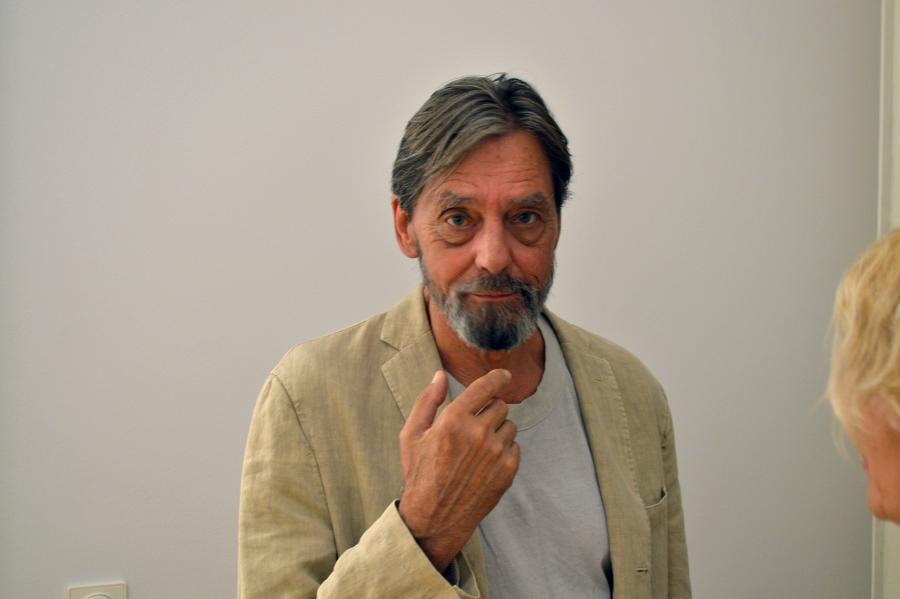
Born as Frank Uwe Laysiepen, known as Ulay, recently introduced as Water. The grandparent of performance, turning 70 this year, talks about his current exhibition, recent work, and some memorable moments of his 42 years long involvement in art. We met him at Salon Dahlman last week at the pre-opening of his show "Ulay on Ulay".
I heard you are now introducing yourself as Water. Why Water? How do people react to your new pseudonym?
In the art circles I am know as Ulay so I do not need to introduce myself. But if I introduce myself to people who do not know who I am, I introduce myself as Water. Of course people get confused, so I draw the attention to something that I find very important. I do not have a business card saying „Water“. There is a great website called earthwatercatalogue.net. With that website I appeal to artists around the globe to contribute artworks regarding water. Artists always have a different view, and I hope that with the variety of artworks we can also produce a different view about drinking water which brings more awareness about it.
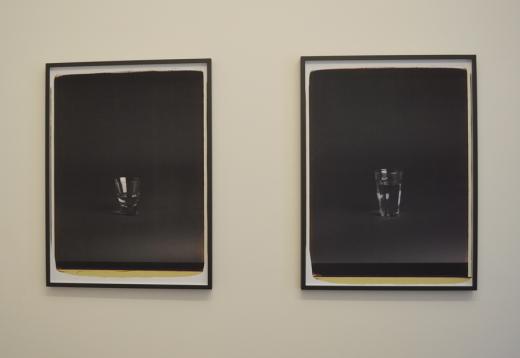
Your work has always had a strong ethical component. Do you consider it a prerequisite for art – your art and art in general?
I have my own values and philosophy and for me it's important to blend ethics with aesthetics. That is very personal. Usually artists are more concerned with formalism and aesthetics. They produce a signature style, which I didn't do. I'm just not that person. But I cannot judge others.
What would you say are your principles?
My values and my dignity are always dominating, leading me. Principles... Be good, don't hurt anybody, don't take from anybody anything away unless it is given, behave respectful. That doesn't mean you can't make pushy or provocative art, like I've been doing for a long time. All of the performances, for example, were very uncomfortable to many people, especially to art historians and art critics. And to general art audience as well. But I can only speak for myself. It's up to individual moral standards. I really don't care. What I care about is that ethics have to be respected by everyone, regardless of being an artist or not.
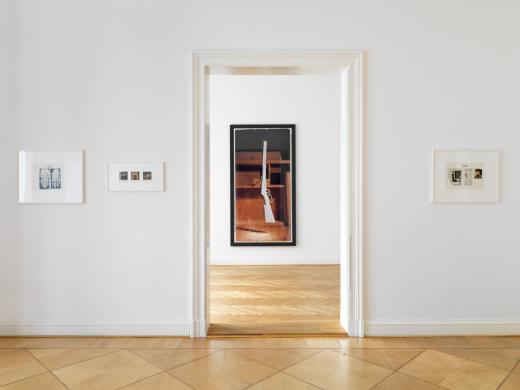
pictures courtesy of the artist and MB Art Agency Amsterdam. Exhibition view from Salon Dahlmann
In your current exhibition the emphasis is on photography.
I don't see myself as a photographer. A photographer has a certain frame of mind in which he sees the world through the lens in a particular optical way. I don't do that. I never walk around with a camera. I engage it only when I am project oriented. The works here are documentary photographies of performances, snapshots with small polaroids and polaroid collages with aphorisms written on it. I have been writing aphorisms for a long time – I actually started with aphorisms. In one stage I discovered polaroids, it was in 1969-70. I was then still busy with aphorisms, with the expression by words. So I put the polaroid photographs into a typewriter and wrote aphorism poems over them. Whenever I plan a project with or about photography, I think about what kind of medium should I involve. There are for example polaroids that are 2,40x1,12m. I was the only European artist who had access to this camera, which is bigger than this room. I have a handful of cameras so I always choose a particular medium to technically get closest to the idea, to transport the idea onto the medium. I have a great deal of knowledge about analog photography and I have experimented a lot with it. But I wouldn't call myself a photographer.
Why did you choose photography in the first place?
Because it is so realistic. I am not busy with truth, I would never pretend that a work of mine is approaching or representing truth. I am busy with reality. And photography is about, or was at least, the best copy of reality. Later video went even further. You see, polaroid is interesting, it is called instant media, but actually the first real instant media was video. It is one to one. I often engaged video as well, namely to document performances. Photography was the closest to reality, and reality is the thing that appealed to me the most.
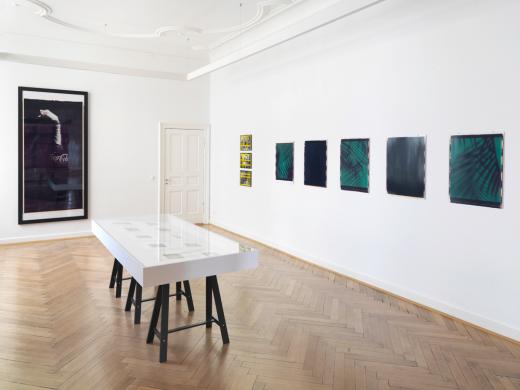
pictures courtesy of the artist and MB Art Agency Amsterdam. Exhibition view from Salon Dahlmann
In your artistic practice you were often involved in risky situations. Did it ever come to the point where your life was in danger and how was this part of it?
I was very interested in two things – identity and limits. If you don't know where your limits are then you have a strange life. And by challenging certain activities by means of performances, you get to know your limits. I was stitching my mouth, running for an hour against the wall and did all these kind of auto-aggressive self-mutilating things. It has made me very strong. But real danger... no. Sometimes there was a chance that the danger would come from the audience, that somebody would interpret the performance as aggressive. I was aggressive to myself and with that incredibly powerful emotion you use yourself as a model, as a vehicle. The audience can be very unpredictable because of the emotions. Rather than walking away or closing their eyes, they just stay. It becomes unbearable, but they stay and sometimes react.
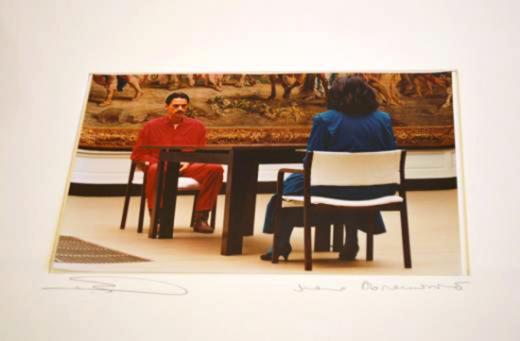
What was the most memorable in your performances?
In the early performances the energy was tremendous. You could feel it, the warm, hot, thick air. It was very uncomfortable for the audience that was used to galleries and museums, paintings and sculptures. People have fainted sometimes. Later on, there were performances like Night Sea Crossing. Marina and I were sitting at a long table, absolutely motionless, silent and fasting. Sometimes for 16 days. That was maybe harder than running for an hour against the wall. You have to control yourself so tremendously and you have to be concentrated. It becomes a highly meditative piece. Most of the time people would use this performance to sit on the floor and meditate. Very rarely they were annoyed by this incredible tableaux vivant. You know, montionlessness, fasting and silence are the three things western society does not credit. Motionlessness is being not active, fasting is not eating and silence is not communicating. These things are very obsessive. Very rarely someone would come and put a can of CocaCola on the table demonstratively, or something similar. Most of the time it was incredibly quiet and beautiful.
How do you look back on your partnership with Marina? You collaborated with other people as well, but never as powerful.
The collaboration between Marina and me was absolute stunning. It is also stunning that we made history and we were considered to be the grandparents of performance, which is a compliment. Very powerful, very good, very moving. Until the point when we became an institute because of the fame, and that has bothered me because I flirt more with an anarchist idea. And anarchism and institute do not go together. But no regrets here. Everything was very powerful and wonderful. We have moved a lot of things in the art world, not only art as such, but have also initiated many new alternative spaces. We couldn't do performances in the white cube galleries and museums, it was considered subversive.
Why did it end between the two of you?
It ended like it began, very natural. If you create an art institute with two people and separate them, then people are not happy with it. There are many artist couples that go on forever. In my opinion we have done all we could do in these 12 years of collaboration. If we would have continued we would become either more commercial, or the market value would go up and we would produce more and more because of the reputation. That is not my thing. I am not really a gallery artist. I do have a show now in a gallery in London, but after 42 years of being an artist. I am a nomad. I still do not have an atelier and storage.
Do you think you might collaborate with her ever again?
No.
How was it to meet with her again during her performance in MoMA?
Marina has invited me to come to the opening. I was in contact with her the day before the opening and I encouraged her. It was a tremendeous task, something that she hasn't experienced before. And she's very powerful, she could do it. She knew that I would come for the opening but she didn't expect me to sit there. She was totally moved by it, and so was I. It was a very touching moment. But not inscenated. It was very sponaneous. If it was not, she would not have been crying and I would not have been moved by my emotions.
What do you think of her work now?
It is different. Many things in the work she has done after our separation are of course taken as source material from our collaborative works. I am not a friend of performance re-enactments, I do not see a reason for it. There are plenty of young performance artists now who do great things, so reenactments for me are totally uninteresting. Especially seeing people now 30 years later doing all of our performances. I mean, why? For what? Marina got very commercial. I don't have much affinity to her work now. Depends; she does some other great things. She is now busy establishing the Marina Abramovic Foundation for the preservation of performance art, which is strange because performance is by nature ephemeral. You cannot preserve performance. But you know, I'm not the right person to ask because I have a particular opinion, and when she is not present I don't like to criticize her. If she was present, I would.
Is there a person who you look up to as a source of inspiration?
Samuel Beckett was maybe the most inspiring person throughout my life. The playwrights, the books, the poetry... And his lifestyle. He was an extremely private person, very difficult to get interviews with. A truly beautiful man. He was a little bit my alter ego.
Among many other things, your lifestyle was often characterised as nomadic. Which place do you call your home these days?
I never had the sensation of being homesick. I guess that home is where my heart is. I can easily change places. I have preferences of course, everybody has, but since three and a half years ago I've been living in Lubljana and I love it. I have friends there and it's incredibly nice. After 42 years I moved from Amsterdam, but I was based there and living in China, Australia, India, North Africa... Now I'm getting really quiet because I'm turning 70 this year. There's more to life than work, or art.
Could you tell us something about your upcoming projects? What can we expect from you in the near future?
I have a couple of things going on right now. One thing is a film made on me from November 2011 to November 2012. The film is called Project Cancer. I was suffering a heavy cancer, and in this period from November to November we have shot this film. Luckily I survived. The premiere is on the 12th of September in Slovenia, in Ljubljana. The second thing I'm working on for more than a year now is a monography. It will be the first ever, with about 500 pages. Then of course this show, and in the beginning of October a big show in a gallery in London and at the Frieze Art Fair. These are the things that keep me busy. Aside from that, I spend most of my time focusing on water. A month ago I was invited to Athens by an enterprise called World Water Museum. They brought me from Athens to Delphi, to the sacred springs where I took water in a container and brought it to a gallery in Athens. There were works of mine, water related, from Palestina, Israel, Patagonia etc. And I had a big role of blue-white string. There were about 200 people and I connected them with the string. Later I went from person to person to knot it around their wrist. With that I established the first Greek water society.
Ich bin Ich: Ulay on Ulay at Salon Dahlmann/ is running until 06.October
Opening hours: Fri 12-18 - Sat 10-18
*During ABC the exhibition will be open also on Thursday, 19 September
Save the Date: 02. Oktober 2013, 17h Artist Talk with Ulay und Henriette Huldisch (Curator Nationalgalerie im Hamburger Bahnhof - Museum für Gegenwart Berlin)